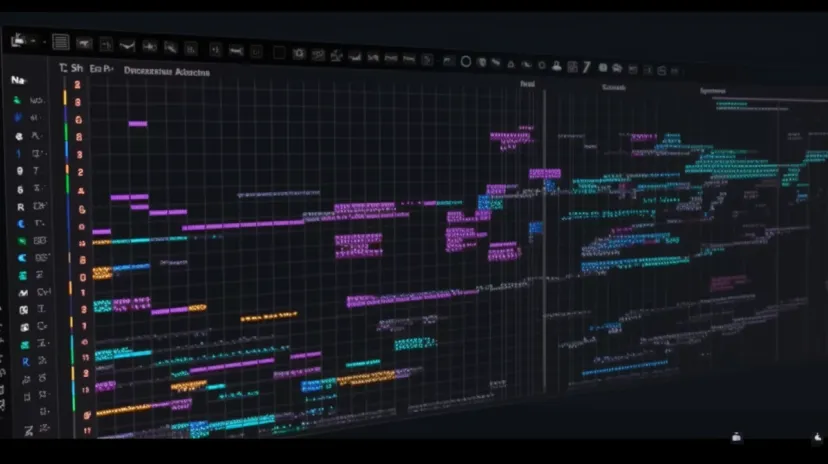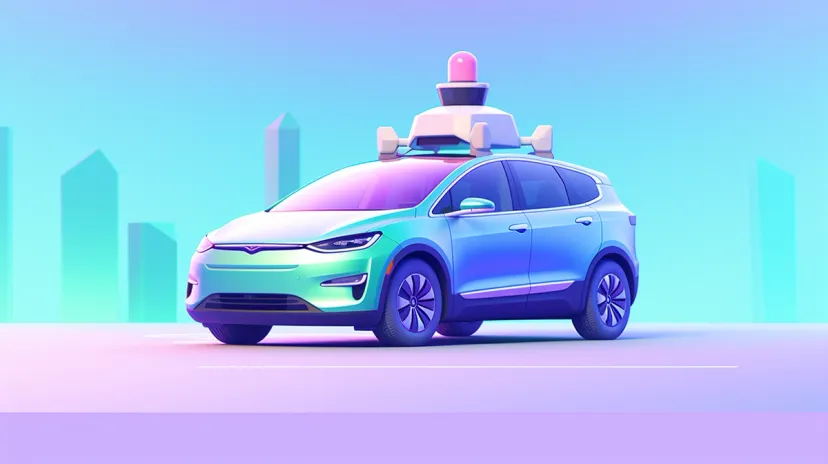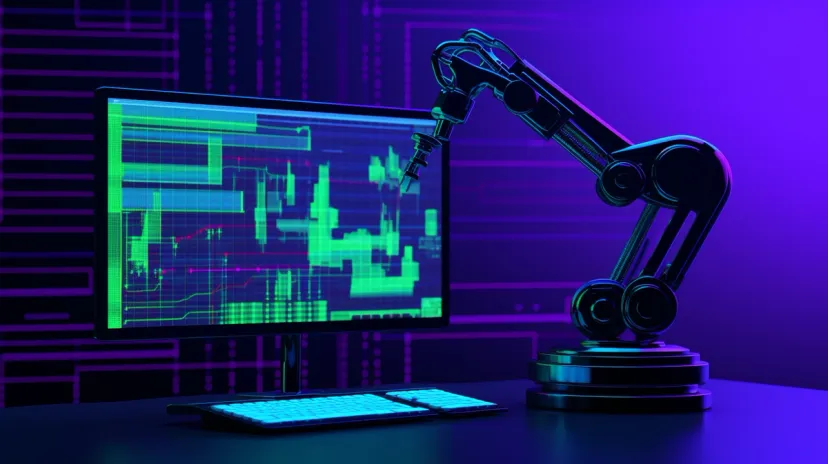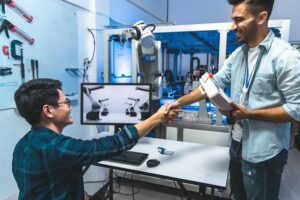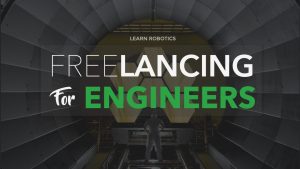So you want to become a robotics engineer, right? That’s what all the cool engineers are going after these days. But, before you get all excited about the idea that you’ll be building the next latest and greatest robot wizard, you must understand the two coding languages for robotics: Python and C++.
If you have these two languages in your tech stack heading into 2024, you’ll be ready to soar within the robotics job market.
In this article, I’m going to outline a few recommended Python and C++ courses to help you advance in robotics.
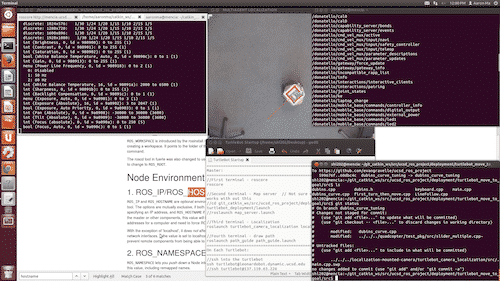
If you’re brand-new to programming, I recommend starting with Python and working your way up to C++.
You won’t master either language in a day, and you’ll wind up being thoroughly confused if you attempt to learn both languages simultaneously (with or without prior coding experience).
There are a ton of resources out there to learn to code.
⚡️ In the beginning, building momentum is more important than choosing the perfect course. Read this article, then pick one
If you know you want to end up in robotics, don’t waste your time with other languages.
It’s not necessary. Just focus on mastering Python and C++.
How Coding Languages for Robotics Relates to Robotics Careers
Furthermore, if you know the job title for the role you’re shooting for, you can confirm which languages are required and ensure that your skills align with what the company is looking for. We do this process with our VIP Mentorship clients because there’s no point in learning languages that companies don’t care about (or aren’t hiring for).
- In this article, we’ll explore the big two languages, Python and C++, specifically for growing and gaining skills in robotics.
- I’ll also recommend a few applied (advanced) C++ courses that have direct ties to the latest and greatest advancements in the robotics industry.
By the end, you should have a good feel for which course you’re going to take, sign up, and start learning!
Python Programming Courses
You can find Python programming courses just about everywhere: YouTube, Udemy, Coursera, edX, and Udacity. Everyone in the e-learning space has some sort of course on Python. It’s a great first language because it’s easy to read, and has a lot of similarities to English and Mathematics.
You can use Python for a variety of applications including the Internet of Things, scripting, web applications, data analytics, and rapid prototyping.
Here are the best courses online to learn Python:
Intro to Programming
Continue your programming journey and enhance your skills with ‘Intro to Programming’ by Udacity, a four-month course designed for beginning programmers. Delve deeper into Python, one of the most versatile programming languages, as you progress from fundamental concepts to more advanced skills.
This second-level course expands your knowledge by introducing file manipulation and Object-Oriented Programming (OOP), allowing you to create classes, objects, and methods. Additionally, the curriculum includes an introduction to JavaScript, covering the basics of data types, conditionals, loops, functions, arrays, and objects.
Cap off the course by applying your newfound JavaScript knowledge to construct the core functionality of an eCommerce shopping cart.
With a focus on hands-on learning and practical application, this course is an ideal continuation for those looking to solidify their programming skills and explore the capabilities of Python and JavaScript. Sign up online here.
Python for Everybody
This is by far my favorite Python course. You can take PY4E as part of the Coursera Python Specialization, or take the courses on edX.
Python for Everybody is for everybody.
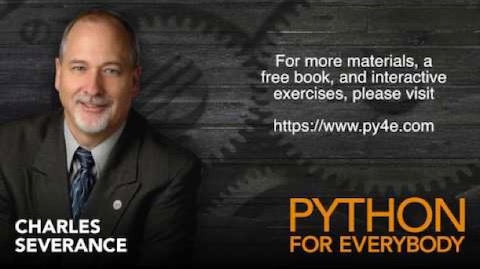
You don’t need any programming experience to start gaining skills in Python. Plus, it’s a very fun language to learn! The PY4E course has a supplementary book (which is optional) if you want something tangible to read and review. Dr. Chuck is an awesome professor.
If you’re really into Python and have some basic programming experience, you can probably complete the Coursera Specialization in about a month. (Like I did!)
As a whole, Python is relatively easy to pick up, and it’s used for a variety of advanced computing algorithms.
IBM Python for Data Science, AI & Development
IBM Python for Data Science, AI & Development course offers a comprehensive and accessible introduction to Python programming, making it an ideal starting point for beginners with no prior coding experience.
The curriculum covers essential Python basics, including data types, expressions, variables, and data structures. Students will gain proficiency in applying programming logic through branching, loops, functions, objects, and classes.
A highlight of the course is the hands-on experience with popular Python libraries such as Pandas, Numpy, and Beautiful Soup, empowering learners to efficiently manipulate and analyze data. (This is also taught in PY4E.)
The inclusion of practical skills in accessing web data through APIs and web scraping using Python in Jupyter Notebooks enhances the course’s real-world applicability.
Taught by an expert (and endorsed by IBM), the self-paced nature of the course accommodates various learning styles. Upon completion, participants will not only feel confident in creating basic programs but will also be equipped to tackle tasks in data collection, analysis, and automation.
The versatility of the skills acquired makes this course suitable for a broad range of career paths, including Data Science, Data Analytics, Software Development, Data Engineering, AI, DevOps, and various other job roles.
I’d choose this course if you want to stay software-side in your Python learning.
Enrolling in this course is a strategic step toward meeting the escalating demand for Python proficiency in today’s competitive job market.
Sign up here for IBM’s Python for Data Science, here!
It’s very easy to get sidetracked into all the cool things you can do with Python programming. But if your end goal is working on robots, try to keep that in mind as you’re taking these more generic courses.
A lot of the research and preliminary development is created in Python and then later converted to C++ or production-ready code.
This means, that once you have a solid understanding of Python, it’s time to graduate to C++.
C++ Programming Courses
C++ is a very popular professional programming language in robotics. It allows you to use OOP to manage the complexity of software while also interfacing nicely with machine hardware.
If you’re looking to get into Algorithms, Artificial Intelligence, Machine Learning, and/or Robot Operating System (ROS), you’ll need to have a solid foundation in C++.
Whether you’re just starting with programming or you know other languages, here is a list of online courses to learn C++ programming.
👉 Looking to specialize in robotics? We use C/C++ in our Beginner’s Robotics Certification. It’s the best way to gain “full-stack” robotics fundamentals on the internet in as little as 3 months. Check it out.
Top 3 Courses to Learn C++ Online
C++
Embark on a transformative journey into the realm of high-performance programming with the C++ course, an enriching three-month program tailored for intermediate learners.
Designed for those with no prior experience, this course immerses participants in the intricacies of C++, a dynamic programming language integral to groundbreaking engineering fields such as self-driving cars, robotics, web browsers, media platforms, servers, and video games.
The curriculum unfolds with a focus on hands-on experience, guiding participants through the development, compilation, and execution of C++ programs. Covering essential topics like syntax, functions, containers, and the integration of multiple files, learners gain a comprehensive understanding of C++.
Beyond the basics, the course delves into advanced skills including threading, concurrent computing, computer memory architecture, and dynamic memory allocation, ensuring participants acquire the expertise demanded by today’s most exciting engineering jobs.
Whether aspiring to contribute to the development of self-driving cars or engage in cutting-edge robotics, this course opens the door to a multitude of possibilities in the dynamic world of C++ programming.
Self-Driving Car Engineer Nano Degree
In this training, you’ll go beyond C++ and write software for autonomous vehicles through the Self-Driving Car Engineer Nanodegree program—an extensive and advanced five-month course. Developed in collaboration with industry leaders like Waymo, this program delivers a distinctive learning experience dedicated to shaping the future of self-driving cars.
Throughout the course, participants will cultivate critical machine-learning skills essential for autonomous vehicle engineering.
Covering the complete life cycle of a machine learning project, from framing problems and selecting metrics to model training, the curriculum places a special emphasis on camera sensor technology.
It guides learners through the intricate process of processing raw digital images and constructing convolutional neural networks using TensorFlow for precise object classification and detection.
Expanding its scope, the program delves into a comprehensive exploration of lidar sensors, sensor fusion, multi-target tracking, robotic localization, and path planning.
This holistic approach ensures participants gain a profound understanding of the intricacies involved in creating autonomous vehicles.
Guided by experts from the Mercedes-Benz Vehicle Intelligence team, learners explore path planning stages—from predicting other vehicles’ behavior to constructing finite state machines and generating safe trajectories.
The curriculum also imparts practical knowledge of control systems, emphasizing mastery of the Proportional Integral Derivative (PID) controller—an indispensable tool in autonomous driving techniques.
Upon completion of the course, participants will emerge with a comprehensive skill set, well-equipped to contribute meaningfully to the realization of the self-driving car revolution.
Through hands-on projects, industry insights, and collaboration with leading experts, the Self-Driving Car Engineer Nanodegree program provides a dynamic and immersive learning experience at the forefront of the autonomous driving revolution.
Whether aspiring to shape the future of transportation or seeking to enhance expertise in machine learning and robotics, this program offers a unique opportunity to gain practical knowledge and skills to meet the challenges of autonomous vehicle engineering.
Robotics Software Engineer
Finally, another applied option for intermediate and advanced C++ coders is the Robotics Software Engineer course. You’ll explore a variety of topics including computer vision, machine learning, mechanics, and hardware systems converge to shape the bots of the future.
The program’s well-structured curriculum ensures that participants are equipped with a robust skill set, making it accessible to both novices and experienced individuals.
Prior knowledge in basic descriptive statistics, Lidar, Basic C++, linear algebra, and basic calculus sets the stage for a comprehensive understanding, while proficiency in written and spoken English is emphasized for effective communication in the field.
One significant benefit of the course lies in its hands-on approach to learning, with a focus on practical applications using tools like Gazebo, a widely adopted simulation engine in the robotics community.
Participants delve into the Robot Operating System (ROS), gaining expertise in creating a flexible and modular software environment for robotic development. The incorporation of Gaussian filters and Monte Carlo Localization (MCL) techniques enhances the ability to handle noisy sensor readings and estimate a robot’s position within a known environment.
This course empowers individuals not only to comprehend these fundamental concepts but also to implement them through practical projects, fostering a deeper understanding of the intricacies of robotics.
As the course progresses, participants are guided through the intricate process of creating a Simultaneous Localization and Mapping (SLAM) implementation using ROS packages and C++.
The fusion of mapping algorithms with localization lessons culminates in a practical understanding of SLAM, a pivotal skill in the world of robotics. The program further advances by delving into diverse Path Planning and Navigation algorithms.
The pinnacle of this educational journey is the synthesis of SLAM and Navigation into the development of a home service robot capable of autonomously transporting objects within a home environment.
This holistic approach not only imparts theoretical knowledge but also instills the practical skills required for real-world applications in the software side of robotics.
I’d recommend choosing this path if your goal is to take your software skills and move them into the robotics domain. The Robotics Software Engineer course not only provides a comprehensive exploration of foundational concepts but also ensures that participants acquire the practical skills necessary to thrive in the dynamic and evolving field of robotics.
How to Learn to Code Robots Online
Regardless of your learning style, you can find a programming course that best suits your needs and helps you advance your career. Remember, it’s not a race to the finish or who can finish the most online courses first.
I recommend first learning the language (Python or C++) and then taking that language and applying it to a project in the robotics field.
Robotics becomes complicated, so the more fundamentals you have, the more enjoyable it will be as you start stacking skills. The best robotics engineers have strong fundamentals. Get good at these concepts and then progress over time.
The best part about using online courses as a resource is that you can play, pause, rewatch, and relearn anytime. Use this to your advantage, and if the course allows it, communicate with the instructor and your peers. This will only help reinforce new concepts.
⚡️ And, remember to APPLY what you learn to a project or application.
Once you have your feet wet with Python and C++ programming, you may want to direct your learning to courses directly tied to robotics, as mentioned in my recommendations.
Relevant Coding Courses for Robotics
While there are a ton of resources for learning to code online, not all of them are relevant to the field of robotics. You can find coding courses for robotics by refining your search terms.
Look for courses that have ties to robotics, automation, autonomous vehicles, drones, and AI algorithms.
If you know the specific topic you need to learn, then you can search for that directly. Finding a good course on Kalman Filters might be difficult if you don’t know what a Kalman Filter is or why you’d need one.
That’s why it’s a good idea to find degrees, professional certifications, and online programs (like ours) to help facilitate your learning.

Udacity has a six-month nano degree if you want to become a Self Driving Car Engineer (and learn what a Kalman Filter is). Regardless of if you have a degree, you can polish your skills for a career in advanced robotics if you take your time and learn the fundamentals. The robotics catalog on Udacity is fairly extensive in comparison to other online degree programs. You can learn everything from C++ to Sensor Fusion, to Data Structures and Algorithms.
👉 Once you stack these programs together, you’ll have a solid foundation for robotics engineering jobs and our VIP Tier Mentorship Program.
Just “learning to code” isn’t enough
If you want to work on robots and advanced autonomous systems, being great at Python and C++ isn’t good enough.
Experience with applied programming and developing software for hardware systems is critical.
The best way to gain these skills is to work for companies who are developing robots or automated systems or enroll in specialized courses to help you practice.
It’s next to impossible to just “wing it” when it comes to advanced patterns in software development.
The best way to figure out what skills you need to learn is to think about the types of robots you want to work on and the specific skills you’ll need to get there. Determine the “end goal,” or where you want to end up in the robotics field.
Is it writing software for self-driving cars or creating flight patterns for autonomous drones?
There are so many niches within the robotics field, that it’s critical to figure out what you want to do so that you can take steps in the right direction.
Lastly, if you’re entering into the robotics field from an Automated Manufacturing perspective, know that it’s entirely possible to not know Python or C++ coding languages for robotics and still have a successful career developing controls code for PLCs 🤯.
However, a lot of the glorious robots we see in the media and on TV today are built using sophisticated programs written in C++, not Ladder Logic, Structured Text, or Function Block.
Automated Manufacturing is becoming smarter, and there are a lot of opportunities to develop infrastructure and systems using advanced programming skills. But it’s not nearly at the same level of software development needed to create an autonomous car.
Which coding language do you use for robotics? Let me know in the comments below.



